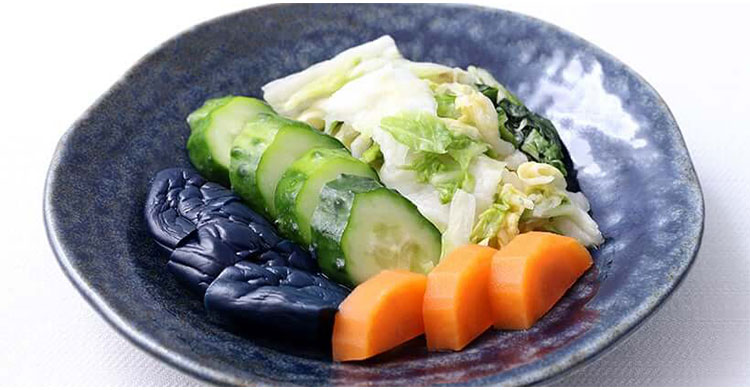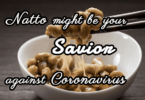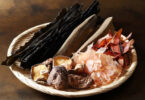Contents
Fermented food is good for health
Hi everyone how are you? As almost everyone have heard or seen that Japanese food is refered to as one of World’ healthy food because of fermented food like Miso, Shoyu, and Tsukemono (Japanese Pickles) .
Thanks to these “Cool Japan” healthy food, Japan has sometimes been touting their longevity in the world.
Pickles are deeply embedded in the lives of the Japanese to the extent that Japan is sometimes called a “pickle utopia”.
What’s ” Tsukemono(Japanese pickles) “?
Japanese pickles, “tsukemono“, are made by pickling the ingredients, primarily of vegetables, in salt or other seasonings. They’re generally quite salty.
Many different kinds of vegetables can be grown in the country.
In addition, the country is surrounded by the ocean, which means that salt has always been available in abundance. Tsukemono made using salt were developed as a means to effectively preserve vegetables.
And rice is Japan’s staple food. It’s rich in nutrition but relatively simple in flavour. Tsukemono provide a perfect complement to it, and a tremendous range came to be produced.
Lacto Acid Bacteria/Lactobacillus
Thanks to Lactic Acid Bacteria (LAB) which is ubiquitous aruound us, cheese and yogurt produced from milk through LAB farmentation, on the other hand, pickles from vegetables through vegetable LAB just like Sauerkraut which produced when the lactic acid bacteria ferment the sugars in the cabbage.
By intaking of lactobacillus is important in the gustrointestinal environment that raises immunity that leads to increase healthy life span after all.
Back to tsukemono, the many varieties of tsukemono available today ae created by altering the seasonings and methods of pickling. These tsukemono were pickled in sake lees. The distinctive aroma and flavour of the alcohol are evident.
Here are tsukemono pickled in soy sauce. Their rich, mellow, salty flavour goes well with rice. These tsukemono were pickled in mustard. They have a spicy kick!
Most popular Tsukemono : what’s Nukazuke and it it nutritious?
And this is nukazuke which is the most popular type of Tsukemono. Nukazuke are made by packing seasonal vegerables in nukadoko, a bed of rice bran.
The basic ingredient of nukadoko is nuka (rice bran), a byproduct of rice polishing. Speaking of the rice bran, in which vitamine B1 is concentrated, so eating nukazuke helped people to avoid developing beriberi.
Regarding the disease of beriberi, it was once very common in Japan especially after people started eating polished rice, removing the bran, as a result, they suffered beriberi due to the lack of vitamin B1.
From these point, nukazuke pickles are also rich in nutrition.
Salt, water and other ingredients are added, and the mixture is fermented. Small pieces of vegetable are packed into the mixture.
They’re removed the next day and replace with new pieces. This is repeated daily for a week or so, then the nukadoko is ready.
You can now pack any vegetables of your choice into the nukadoko and leave them overnight to create mild-flavoured tsukemono with a fresh salad-like appeal.
If the vegetable are left for several days, further fermentaiton occurs and the tsukemono deepen in flavour.
You can use the nukadoko over and over, so long as it’s well tended. For this reason, nukadoko can be passed down from generation to generation, and the tsukemono made in it may very well take on a flavour that’s unique to that household.
To prevent the growth of mould, it should be mixed from the bottom up once a day, every day.
In modern times, the Japanese diet has become heavily influenced by Western food, but rice and tsukemono remain an essential part of the menu.
It may sound odd, but we have “Tsuke-Steak“, what’s that?
That’s “pickled steak” which is a local dish from Hida region, Gifu Prefecture.
It is also called “pickled ste” in short. It is a popular standard menu in Izakaya(public house or tavern, an Izakaya is the equivalent of an English pub, where they serve snacks to accompany your drinks).
In the Hida region, there was a custom of baking pickles and eating them for a long time. Pickles, which was a valuable food for the frigid winter, serve as vegetables, and the cooking method of baking is the beginning of the cooking method baked in the hearth in order to solve the frozen pickles. In addition, there is also the aspect of reusing pickles that have become stale and matured.
In general, it is often used pickles of cabbage, of which, the one that the egg is mixed is said to be particularly delicious.
The basic way of making is as follows.
Fry the pan or iron plate or a lot of oil until it is browned.
When you taste it with soy sauce or miso, pull it to the center and stop it with a beaten egg.
If you like, sprinkle with dried-bonito-shavings, red ginger and shichimi pepper.
There is a wide variety of dishes, such as baking and matching the green leaf miso instead of the eggs, sprinkling chopped seaweed, adding the bonito with soy sauce, and boiling mackerel.
Finally, I hope you would enjoy Tsukemono for your health and a relish to any Japanese dishes.
And if you love a drink mederately, Tsukemono will go well with beer, sake and wine. Have a good drink!














Leave a Comment